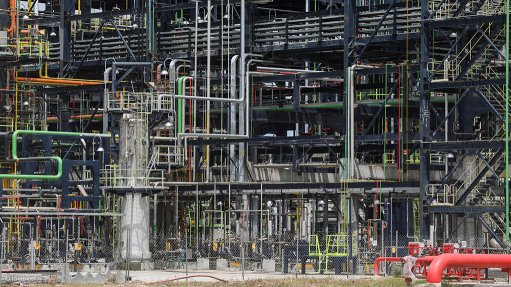Coffee roasting acoustics and other great ideas
One day clients and project managers will realise acoustics engineers are not just dumb and ugly versions of interior designers.
Then, it is possible that incredibly noisy restaurants, offices with no privacy and call centres with unintelligible acoustic environments will become a thing of the past. I am not holding my breath. But until acoustics engineers are more highly regarded, I cannot pay my staff very much.
However, I have a secret way of preventing them from resigning: I feed them very, very good coffee. They are addicted, and, when they consider leaving, they realise they are waving goodbye to decent coffee and entering the world of coffee made by spoon. On this topic, Preston S Wilson decided to do some investigation into the acoustics of coffee roasting (reported in the Journal of the Acoustics Society of America). He reports:
“Cracking sounds emitted by coffee beans during the roasting process were recorded and analysed . . . Near the end of the roasting process, sounds known as ‘first crack’ exhibit a higher acoustic amplitude than sounds emitted later, known as ‘second crack’ . . .
“[The] sounds known as first crack and second crack are the result of pyrolytic processes that occur within the bean during roasting. First crack occurs at an internal bean temperature of about 200 °C and coincides with the release of steam and gases. Each bean experiences a first crack; hence, as a group of beans is roasting, the first one or two cracks are heard and then more and more occur, forming a chorus of first cracks. After about two minutes, first crack ceases and there is an acoustically inactive time.
“Second crack occurs when the temperature reaches about 230 °C and additional gas is emitted, along with increased fracturing of bean material. Again, a few beans begin second crack. Over about the next two minutes, a chorus builds, peaks and declines, and then second crack stops. The beans can ignite and burn beyond this phase; hence, roasting rarely continues beyond the end of second crack. The sounds of first crack are qualitatively similar to the sound of popcorn popping, while second crack sounds more like the breakfast cereal Rice Krispies in milk.”
Another application of acoustics is a device we have invented to establish the degree of noisiness of cars. This is applicable mostly to racing circuits. Our device uses a sound pressure level meter, a box of components and a camera. When the vehicle goes past and if the noise exceeds a certain level, then the meter triggers the camera, which takes a photograph of the reading of the sound level meter and the car. One would think that one could just sit by the side of the racetrack and measure the noise level as the cars go past. This method works fine, even if the cars are quite close, no more than a second apart.
The problem is the drivers are quite dodgy. They know you are sitting there with the sound level meter and, as they approach, they take their foot off the accelerator as they sweep past. Also, sometimes they stuff the exhaust with soft material; so, when doing drive-by tests, they are quiet and then take the material out for the race. They also have silencers that can change the noise artificially. They cannot do this with the camera because we do measurements during the race.
On the topic of acoustics, I am often asked by people with a smartphone the following question: “if I download an app which turns my smartphone into a sound-level meter, how accurate is the sound level meter?” Enter US National Institute For Occupational Safety and Health researchers Chucri A Kardous, MS, PE, and Peter B Shaw, PhD. They found that of the 64 Android apps, only four met basic criteria. However, iOS apps were generally found to be within about 2dB of each other with a difference of about 2 dB between various models of iPhones. The short answer is: not accurate enough. Which hardly surprises me.
Smartphones are all promise with little reality. And if you think I am a dinosaur, then, with regard to sound level meters, I am.
Comments
Press Office
Announcements
What's On
Subscribe to improve your user experience...
Option 1 (equivalent of R125 a month):
Receive a weekly copy of Creamer Media's Engineering News & Mining Weekly magazine
(print copy for those in South Africa and e-magazine for those outside of South Africa)
Receive daily email newsletters
Access to full search results
Access archive of magazine back copies
Access to Projects in Progress
Access to ONE Research Report of your choice in PDF format
Option 2 (equivalent of R375 a month):
All benefits from Option 1
PLUS
Access to Creamer Media's Research Channel Africa for ALL Research Reports, in PDF format, on various industrial and mining sectors
including Electricity; Water; Energy Transition; Hydrogen; Roads, Rail and Ports; Coal; Gold; Platinum; Battery Metals; etc.
Already a subscriber?
Forgotten your password?
Receive weekly copy of Creamer Media's Engineering News & Mining Weekly magazine (print copy for those in South Africa and e-magazine for those outside of South Africa)
➕
Recieve daily email newsletters
➕
Access to full search results
➕
Access archive of magazine back copies
➕
Access to Projects in Progress
➕
Access to ONE Research Report of your choice in PDF format
RESEARCH CHANNEL AFRICA
R4500 (equivalent of R375 a month)
SUBSCRIBEAll benefits from Option 1
➕
Access to Creamer Media's Research Channel Africa for ALL Research Reports on various industrial and mining sectors, in PDF format, including on:
Electricity
➕
Water
➕
Energy Transition
➕
Hydrogen
➕
Roads, Rail and Ports
➕
Coal
➕
Gold
➕
Platinum
➕
Battery Metals
➕
etc.
Receive all benefits from Option 1 or Option 2 delivered to numerous people at your company
➕
Multiple User names and Passwords for simultaneous log-ins
➕
Intranet integration access to all in your organisation

















